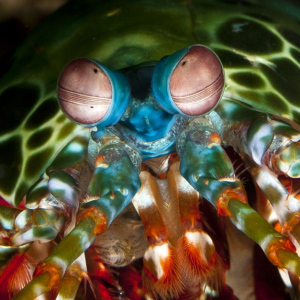What mysterious “monster” is that – let’s dissect this super mysterious creature hiding in the submerged wooden trunk.
You’ll never guess why the whole world is sharing this photo so much
Looking at this picture, we must all feel panic. I’ll bet that 10 people looking at it, 11 people have to say “Mom, what is this”.
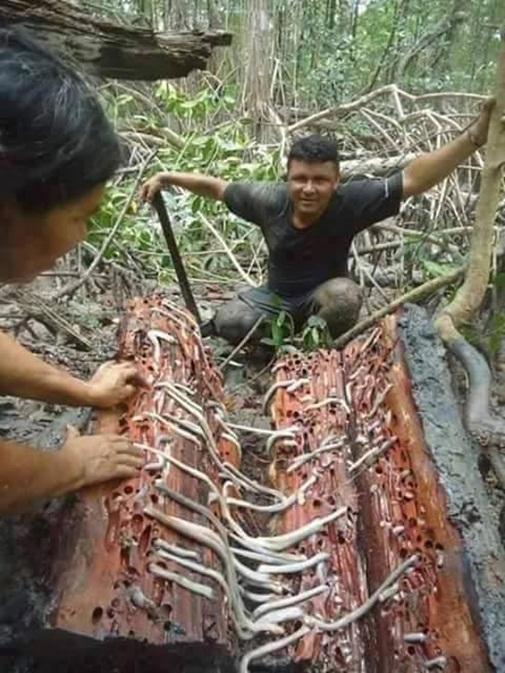
This is the result after a man slashed along the trunk of a tree that had been in the swamp for many years.
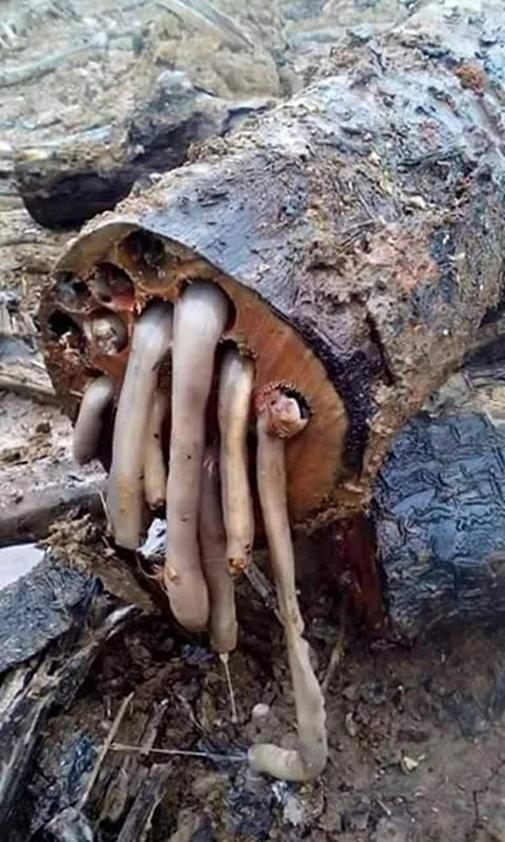
… and when zoomed in on the surface of the tree trunk… What kind of “monster” is that???
Many people will be extremely curious as to what strange creature resides in the trunk so that when the tree is cut, it “shows up” so hideous.
Yes, the answer is the wood chisel (scientific name: Teredo Navalis) guys!
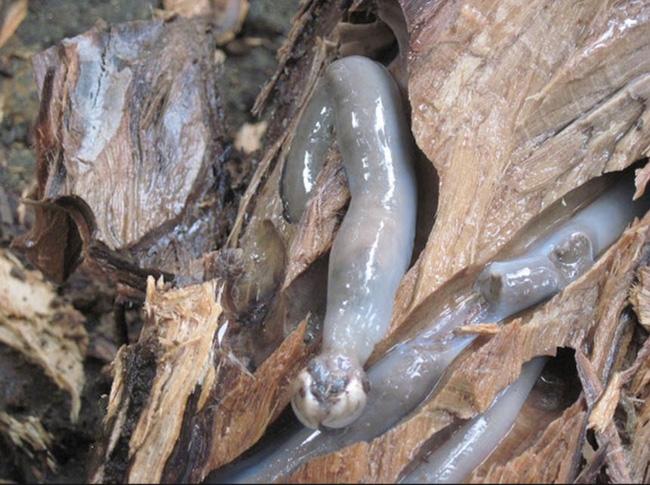
Originating in the Northeast Atlantic Ocean, they have crept and roamed many parts of the globe. Many people believe that they are stowaway passengers – hiding in the hulls of ships and then traveling the world over the centuries.
The reason they set foot and live in so many places is because Teredo navalis has a very good adaptability – can live in warm tropical water; in the cold North Sea or the saltwater of the Mediterranean as well as the brackish water of the Baltic Sea.
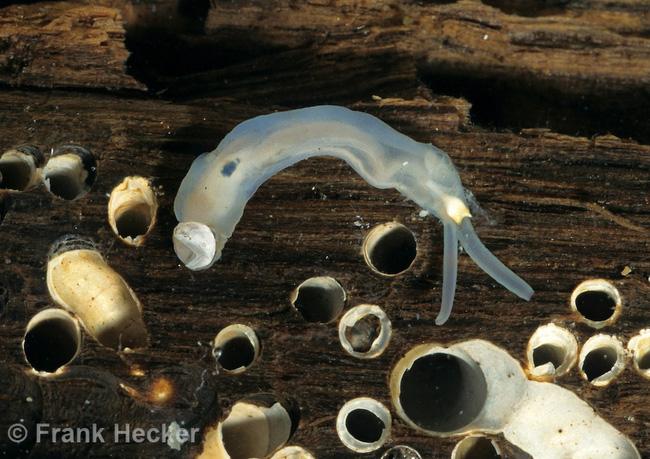
Despite having a worm-like appearance, this creature belongs to the bivalve shell of a mollusk (class oyster). Teredo Navalis’s body is mostly small, about 2cm long, milky white; but there are individuals up to 60 cm long with a body diameter of up to 1 cm and more.
Some individuals are covered with a light brown layer on the body with rough veins, so it is easy to “stealth” in the environment.
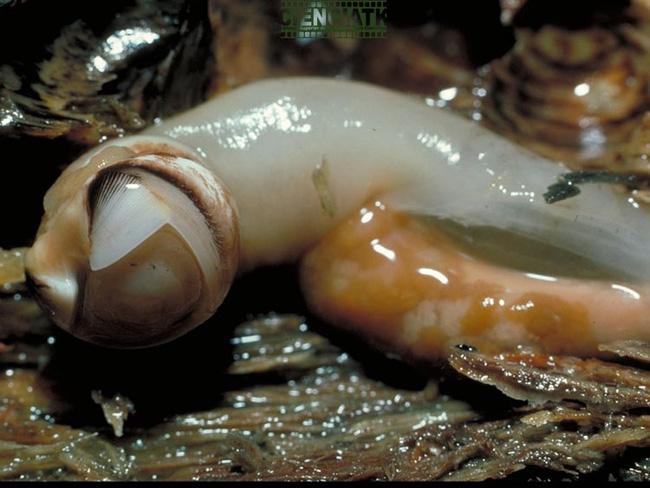
The most special feature in Teredo is the head – almost round, with 2 curved pieces protruding and made up of hard lime covering, rough surface to cut wood, between 2 curved pieces of lime is a round and flat mouth.
There are two tubes at the tail end and these two tubes can protrude in and out. The big tube on the outside is flared, the small tube on the outside is small, the big tube absorbs water and organisms in the water, the small tube discharges feces, so people call these two pipes two siphon tubes. Outside the two siphon tubes, there are two armors made of lime.
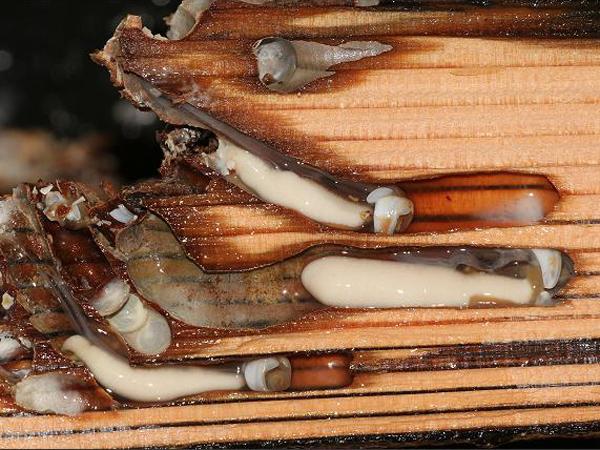
It’s not wrong to say Teredo is an obnoxious troublemaker when they infiltrate the wood from a young age, leaving only a hole as small as the tip of a pin. From this hole, they will use their 2 siphon tubes to connect the life in the wood and the outside environment.
In the process of growth and development, woodworms always secrete a wood softening fluid, a calcareous liquid that, when dry, aggregates around the turbid cave of the hawthorn with a white color. It is this layer of lime that keeps them safe from seawater intrusion.
And then you know, no matter where the head gnaws the wood, the longer the body grows. Each individual chiseled a separate burrow in the wood, but the chisels of this individual do not penetrate the other wood, when the wood is no longer available, the barnacle also runs out of food and dies there.
It is known that the wood borer is a hermaphroditic species, undergoing male and female stages respectively. The males will release the sperm into the sea, the females will swim to the areas where the sperm are present and do their job by sucking the sperm into the body through the siphon.
Here, the eggs will be fertilized and waiting to “deliver”. Can you believe it, each litter, Teredo will give birth to 50,000 to 1 million eggs! Their eggs float in the sea and then cling to the sides of wooden ships and wooden boats and grow.
For fishermen who own wooden boats, Teredo is a pest capable of terrible destruction.
Some documents record, in the Baltic Sea, Teredo individuals can turn an ordinary pine tree soaked in water to “rotten” with countless tunnels in 16 weeks. The time it takes for an oak tree with a trunk diameter of 30cm to deform is within 32 weeks, and almost completely disappear within 1 year.
It only takes a few weeks for a large tree to become “deformed” like this!
That said enough to know how destructive Teredo individuals are. However, many people believe that, due to living in the trunk, Teredo has a high nutritional value. And it is processed by many locals like Thailand as a specialty.




